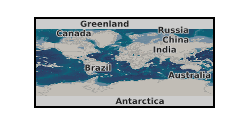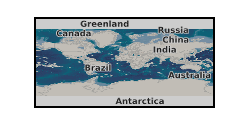Contamination
Type of resources
Available actions
Topics
Keywords
Contact for the resource
Provided by
Years
Formats
Representation types
Update frequencies
Service types
Scale
-

Data related to contaminated land projects completed under commercial contract for local authorities (ConSEPT). The data held and used in the project included published BGS data (borehole, BGS Geology 50k and 10k, water well information), as well as third party data held on behalf of local authorities (including current and historical land use polygons and landfill sites) for the purposes of building the ConSEPT GIS. Consequently some data and the projects are strictly commercial in confidence and should not be shared.
-

Experimental lycimeters investigating the vertical movement of heavy metals in the subsurface of a single UK site at Uffington, Berkshire.
-

Geophysical survey data from Fluid Processes and Waste Management projects for UK and European investigations. Data comprise distinct surveys using a variety of geophysical methods and equipment. All data held electronically as XYZ ASCII-type data points.
-
Fluid pH and major and minor element data from shale-acidic fluid interaction laboratory experiments

This dataset presents major (ICP-OES) and minor (ICP-MS) element data and fluid pH during interaction of simulated fracturing fluids with the Bowland-Hodder shale at a variety of conditions, i.e. fluid acidity (pH 1-5), temperature (25-70 C), and rock/fluid ratio (from 0.2:200 to 20:200), as well as two end member mineralogical compositions (from 618 m depth and 673 m depth). The data was collected under the SECURe (Subsurface Evaluation of CCS and Unconventional Risks funded under the European Union’s Horizon 2020 research and innovation programme under grant agreement number 764531. Data supplied by permission of University of Nottingham and British Geological Survey.
-

The BGS has been commissioned by Defra to provide guidance on what are 'normal' levels of contaminant concentrations in English soils in support of the revision of the Part 2A Contaminated Land Statutory Guidance. The domain polygons and other data produced by this work are served as WMS here.
 NERC Data Catalogue Service
NERC Data Catalogue Service